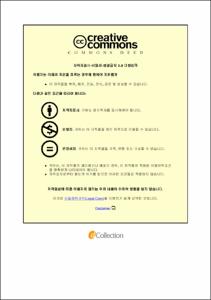Effect of salinity on survival and growth of Marphysa sanguinea (Polychaeta: Eunicidae) juveniles
- Alternative Title
- Marphysa sanguinea의 성장률과 생존율에 미치는 염분의 영향
- Abstract
- Today, integrated multi-trophic aquaculture (IMTA) is the way forward in managing waste from aquaculture farms. The identification of Marphysa sanguinea as a potential candidate for this purpose has aroused the need for its commercial artificial production. Meanwhile, there rarely exist studies on the environmental factors affecting its growth and survival. In order to test the hypothesis that salinity affects survival and growth of M. sanguinea, and to determine the range of salinity tolerance and their effect on the species’ survival and growth, 4,500 juveniles of initial weight 0.006 ± 0.0003 g were cultured under controlled conditions. Triplicate groups of worms were reared under five different salinities (15, 20, 25, 30, and 35psu) for 120 days by semi-recirculation system. Oyster shells (70%, 5 mm in diameter) and sand (30%, 2 mm in diameter) were used together as sediment. Survival rate and growth rate were determined, both within and between groups. Both survival and growth were significantly affected by salinity (p < 0.05). Results of this research confirms that M. sanguinea has high tolerance for salinity fluctuation and proves to be an excellent candidate of IMTA for fish species cultured within a salinity range of 20 – 35psu. For optimum survival and growth in commercial production of M. sanguinea, however, 25 psu is recommended.
- Issued Date
- 2016
- Awarded Date
- 2016. 2
- Type
- Dissertation
- Publisher
- 부경대학교 글로벌수산대학원
- Affiliation
- 부경대학교 글로벌수산대학원
- Department
- 글로벌수산대학원 국제수산과학협동과정
- Advisor
- 김창훈
- Table Of Contents
- Tables of contents i
List of figures iii
List of tables v
Abstract vi
1. Introduction 1
1.1 Background 1
1.2 Problem statement 5
1.3 Hypothesis 6
1.4 Objective 7
1.5 Justification 7
1.6 Significance of study 8
2. Materials and Methods 9
2.1 Design of experiment 9
2.1.1 Source of juveniles 9
2.1.2 Weighing of juveniles 11
2.1.3 Preparing experiment boxes 12
2.1.4 Sediment collection 13
2.1.5 System set-up 13
2.1.6 Feeding of worms 16
2.1.7 Experimental water preparation 17
2.2 Water quality analysis 19
2.3 Data collection 19
2.4 Statistical analysis 22
3. Results 23
3.1 Survival rate of worms 23
3.2 Growth performance of worms 24
3.3 Water quality analysis 28
4. Discussion and Conclusion 34
Reference 40
Acknowledgment 49
- Degree
- Master
- Appears in Collections:
- 글로벌수산대학원 > 국제수산과학협동과정
- Files in This Item:
-
-
Download
 Effect of salinity on survival and growth of Marphysa sanguinea (Polychaeta: Eunicidae) juveniles.pdf
기타 데이터 / 1.76 MB / Adobe PDF
Effect of salinity on survival and growth of Marphysa sanguinea (Polychaeta: Eunicidae) juveniles.pdf
기타 데이터 / 1.76 MB / Adobe PDF
-
Items in Repository are protected by copyright, with all rights reserved, unless otherwise indicated.